I am a White Christian American born and raised.  So it’s been an interesting experience to read Robert Jones’ book: The End of White Christian America.
So it’s been an interesting experience to read Robert Jones’ book: The End of White Christian America.
Jones, CEO of Public Religion Research Institute (PRRI), begins with an obituary:
White Christian America is survived by two principal branches of descendants: a mainline Protestant family residing primarily in the Northeast and upper Midwest and an evangelical Protestant family living mostly in the South. Plans for a public memorial service have not been announced.
He then tracks the history of White Christianity in America, from the founding of the nation all the way through the recent election in which 81% of White Evangelicals voted for Donald Trump.
(Black Christian America and Catholic America both have a different story. The work Jones tackles is challenging enough as he unpacks the complicated family tree of us Protestant White folks. But the analysis he offers about White Protestant Christians is important, critical even, in order to understand our current political climate.)
White Christian America was a given at this nation’s founding. Of course there were a handful of Deists among the Founders but almost everyone was some sort of Christian. Some were pious, others were nominal; some were active practitioners while others wore the name simply because of the comfort of its cultural pervasiveness. The culture of the day was White and Protestant. The leaders of the day were Free Male Land Owners.
So the question: “Is America a Christian nation?” never has been an appropriate framing of the situation. Yes – many of the Founders were some sort of Christian and often their thinking and writing reflected that orientation. Yes – America has been majority Christian for its entire lifetime. But No – the First Amendment makes it clear that, even if there is a religious majority within the nation, the federal government is to be neutral, not establishing (nor disestablishing) any particular religion. And Yes – ongoing amendments and common law have unpacked the First Amendment so the Constitution has been evolving across America’s entire lifetime.
Robert Jones outlines the historic divisions between the two major representatives of White Christian America: Protestant Mainline Christianity and Evangelical Christianity. He does this through the lens of three critical issues: politics, race and family. I will skim through his analysis of White Evangelical Christianity.
Politics in White Christian America
The marriage of White Evangelicals to the Republican Party is a fairly recent development. Jones identifies how a “White Christian Strategy” arose out of the “Southern Strategy” of the 1960’s when White Southern Democrats flocked to the GOP in droves because of their disdain for the Civil Rights Movement. Jerry Falwell and the Moral Majority tapped in to this “Great White Shift” and the Christian Right became a political force. In 1976, Falwell’s “I Love America” rallies were filled to overflowing with people who wanted political solutions to their targeted issues of abortion, feminism and homosexuality. Heirs of this religious-political movement continued to gain steam during the 1990’s, but during the 2000’s, there were numerous scandals, stumbles, divisions and declines within White Christian America. This led to the election of President Barack Obama in 2008.
Just a few months into the Obama presidency, however, the Tea Party emerged. There have been numerous explanations for this movement but Robert Jones cites PRRI data that clearly links the Tea Party to the Religious Right. It wasn’t just about taxes and small government like they claimed; rather objections to abortion and gay marriage dominated the Tea Party movement, demonstrating to Jones that the Tea Party was “another revival of White Christian America.”
Robert Jones added a chapter to this book after the 2016 election, analyzing the fact that 81% of White Evangelical Christians voted for Trump. Jones remains convinced that the End of White Christian America really has arrived, and he sees the current situation not as a revival but rather as the last gasps of a growing minority. White Christian America has been in power for 239 years and we should not expect it to go quietly into the night.
White Christian America and the Family
Jones shows how successful the Christian Right was in its early efforts to outlaw gay marriage based on its commitment to “traditional family values.” Numerous states passed laws and even Constitutional amendments that outlawed marriage equality in the years leading up to the 2015 tumultuous Supreme Court decision. Since that ruling, a variety of religious freedom issues continue to arise that demonstrate the ongoing resistance from the Religious Right.
Racism in White Christian America
In my opinion, the most powerful chapter in Jones’ book is chapter 5. Race: Desegregating White Christian America. In recent years, when young Black men and women were being killed in epidemic numbers by police officers across the nation, President Obama said: “This has been a slow-rolling crisis. This has been going on for a long time. This is not new, and we shouldn’t pretend that it’s new.”
But for White America, it did feel new. PRRI asked Black and White Americans about their perception of police violence.
“Is this part of a larger pattern or are these isolated incidents?”
The perception gap was huge.
Three quarters of Black Americans see a broad pattern while less than half of White Americans do. (The numbers barely changed over the two decades since Rodney King.) But among WCA, the gap was even larger. 74% of Black Americans see a problem but only 26% of White Evangelical Christians do. We look at the same world and we see things entirely differently.
The Ongoing Grief Process
Robert Jones concludes his work with an interesting discussion of the grief process. He says the loss of power, privilege and predominance for White Christian America is evoking the classic stages of grief: Denial. Anger. Bargaining. Depression. And then finally Acceptance.
Jones specifically mentions David Gushee, an Evangelical ethicist, who is nudging conservative Christians to accept the end of White Christian America. But it is an acceptance tinged with hope.
Gushee makes the following appeal to his fellow evangelicals: “We have to grow up—past conspiracy theories, demagoguery, single-issue voting, partisan seductions, mudslinging, and God-and-country conflations and confusions.”
Naming reasons for decline, addressing the causes and finding new pathways forward is the only way through the current dilemma for White Christian America. Gushee is one my recent favorite writers as he seeks to carve out a center space for conversation and collaboration with Non-White, Non-Protestant, Non-Christian America.
Is This Really the End?
I am a White Christian American born and raised. My own path has led me out of fundamentalism, through conservatism and now into liberalism. (Whatever all those fuzzy terms mean!) My own theological studies and my pastoral work with congregations of Christians across the conservative to liberal spectrum has convinced me that White Christian America needs to die.
Too much of what we see represented as Christianity in this nation is an empty shell, a hollow structure.
As a Christian minister, I believe the Church needs to find its way back to the authentic witness of the Christ whose name we wear. If we don’t live as Christ-people, then we ought to die. As an American, I believe our nation will benefit from a rebirth of Christianity and the transformation of American Christians: White, Black, Brown, Conservative, Mainline, Gay, Straight, Rich, Poor, Republican, Democrat, Independent.
When we Christians begin to “treat others as we want to be treated,” then America will be kinder. When we Christians begin to “love our neighbors as we love ourselves,” th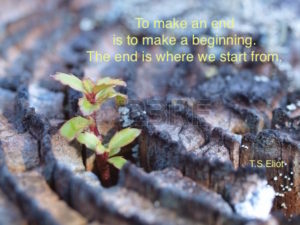 en America will be stronger. When we Christians begin to “empty ourselves” in humble service to others, then America will be greater.
en America will be stronger. When we Christians begin to “empty ourselves” in humble service to others, then America will be greater.
So (as T.S. Elliot said) the end can be the beginning.
Robert P. Jones, The End of White Christian America. Simon & Schuster. Kindle Edition.
Charlotte Vaughan Coyle lives in Paris TX and blogs about intersections of faith, culture and politics on her website and Intersections Facebook page. 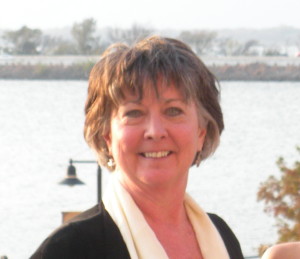 She is national secretary for Coffee Party USA and contributes regularly to the Join the Coffee Party Movement Facebook page.
She is national secretary for Coffee Party USA and contributes regularly to the Join the Coffee Party Movement Facebook page.
Charlotte is an ordained minister within the Christian Church (Disciples of Christ) and also blogs about Scripture from a progressive Christian approach in her Living in The Story Musings.
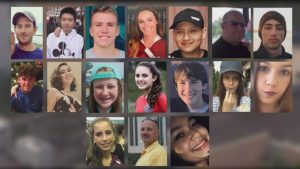 Is it possible that something holy and profound might grow out of this moment?
Is it possible that something holy and profound might grow out of this moment? I use that word carefully, because they are not children if judged by maturity or ability or even wisdom. The voices of some are stronger and more insightful than any of their parents, any of us. But they are children in the best sense of the word, undeterred by political and social realities, their sensibilities and love-for-life not yet tainted by the cynicism that has become pervasive in the world around them.
I use that word carefully, because they are not children if judged by maturity or ability or even wisdom. The voices of some are stronger and more insightful than any of their parents, any of us. But they are children in the best sense of the word, undeterred by political and social realities, their sensibilities and love-for-life not yet tainted by the cynicism that has become pervasive in the world around them.
 Martin Luther King Jr. changed America.
Martin Luther King Jr. changed America. 

 I can allow my most precious relationships to rupture; or I can respond with grace and healing.
I can allow my most precious relationships to rupture; or I can respond with grace and healing. Truth will always come out.
Truth will always come out.  Within my own Christian religious tradition, patriarchy has been the norm. Our own Scriptures offer multitudes of examples of this cultural norm. Not because our religion created male dominance but rather because any religion can incorporate any kind of cultural expectations and baptize them with religious justifications.
Within my own Christian religious tradition, patriarchy has been the norm. Our own Scriptures offer multitudes of examples of this cultural norm. Not because our religion created male dominance but rather because any religion can incorporate any kind of cultural expectations and baptize them with religious justifications.  and we find ourselves grappling once again with the epidemic of gun violence that infects our nation. The mass murders of these people who were worshiping within their sacred space evoke our anger, our confusion and our deepest indignation.
and we find ourselves grappling once again with the epidemic of gun violence that infects our nation. The mass murders of these people who were worshiping within their sacred space evoke our anger, our confusion and our deepest indignation.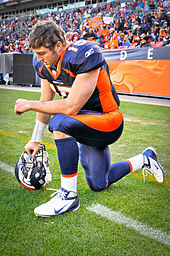 Tim Tebow knelt on the football field every time he scored a touchdown. I understand that to be a sign of respect for his God even in the midst of a very secular setting. Was he scolded for using the NFL to flaunt his personal beliefs? Was he chastised by fans because he was praying on NFL time?
Tim Tebow knelt on the football field every time he scored a touchdown. I understand that to be a sign of respect for his God even in the midst of a very secular setting. Was he scolded for using the NFL to flaunt his personal beliefs? Was he chastised by fans because he was praying on NFL time?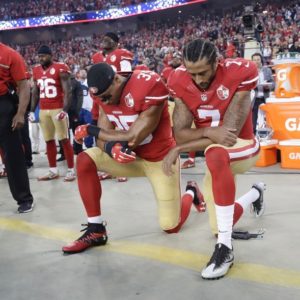
 She serves as national president for
She serves as national president for  So it’s been an interesting experience to read Robert Jones’ book: The End of White Christian America.
So it’s been an interesting experience to read Robert Jones’ book: The End of White Christian America. en America will be stronger. When we Christians begin to “empty ourselves” in humble service to others, then America will be greater.
en America will be stronger. When we Christians begin to “empty ourselves” in humble service to others, then America will be greater. I’m one of countless humans who have made such journeys but it saddens me that many of my fellow Liberals seem to have forgotten their mother tongue. We are people who understand where Conservatives are coming from, not only because we have been there but also because many of our friends and family still live there. Our bilingual skills are desperately needed in these days of rancor and blame. We need to use our ability to understand their world and speak their language so that we can help build more bridges of communication.
I’m one of countless humans who have made such journeys but it saddens me that many of my fellow Liberals seem to have forgotten their mother tongue. We are people who understand where Conservatives are coming from, not only because we have been there but also because many of our friends and family still live there. Our bilingual skills are desperately needed in these days of rancor and blame. We need to use our ability to understand their world and speak their language so that we can help build more bridges of communication. I’m also on the search for other bilingual partners who are willing to use their skills of understanding the world of another and are willing to speak their language. This is how we can change the world: one conversation at a time, one friendship at a time, one bridge at a time.
I’m also on the search for other bilingual partners who are willing to use their skills of understanding the world of another and are willing to speak their language. This is how we can change the world: one conversation at a time, one friendship at a time, one bridge at a time.